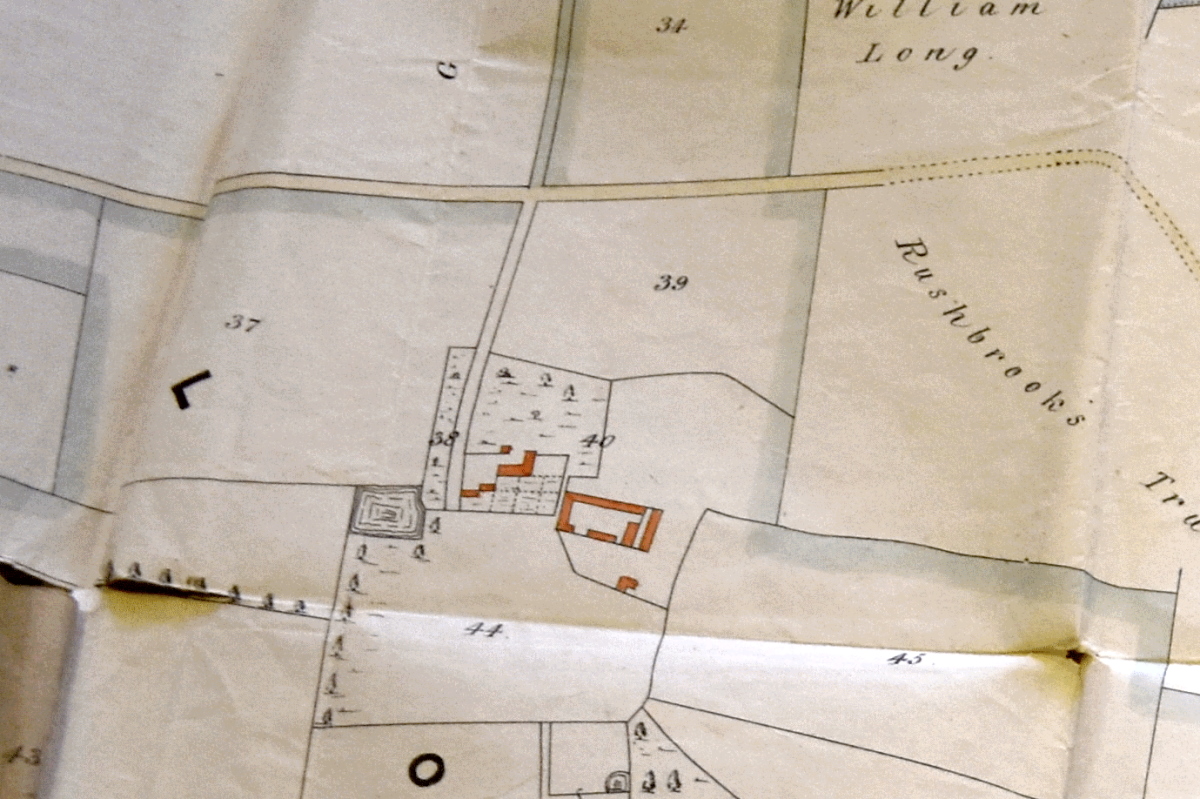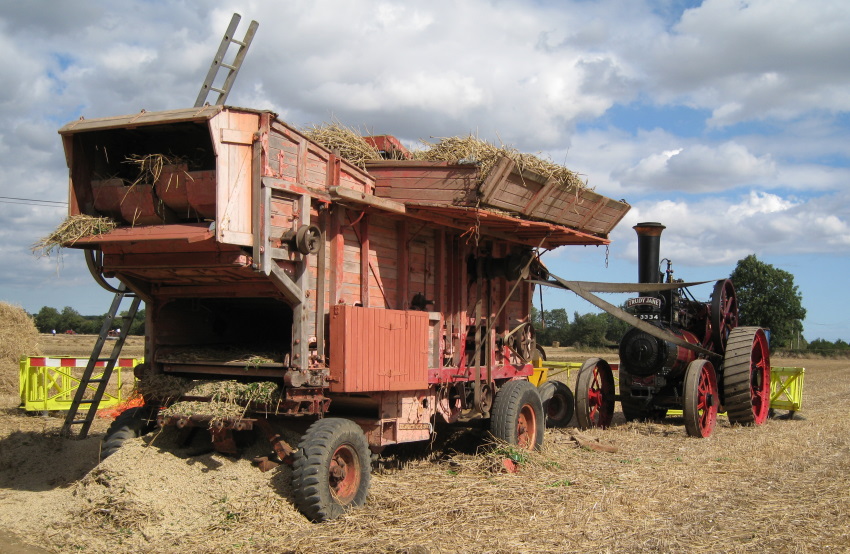Drings / High Common Farm

The 1869 Great Farm Auction describes this “Lot 2”, 250 acre farm without giving it a name. However, it had previously been known as “High Common Farm” and had been occupied by the Rushbrooke family. There was Thomas Allen Rushbrooke followed by his son – (eventually known as) Thomas Allen Rushbrooke jnr. The son had been a twin and was baptised “Allen”. His twin brother was named Thomas – but when this brother died relatively young, Allen changed his first two names to Thomas Allen! Hence, both father and the surviving son were now named Thomas Allen Rushbrooke.
Thomas Allen Rushbrooke snr, first arrived in the area when he and his wife moved to Silfield. After their 14 children(!) were born, they moved to High Common Farm where he appears to have been a tenant of the Harrison family (residing near Diss) although it’s not clear how long the Harrisons had owned the farm. The Electoral Registers lists tell us Thomas Allen Rushbrooke snr was also the owner of lands and houses at High Common – although this property ownership seems to relate to the nearby 90 acre High House Farm. (Note the adjacent area marked “Rushbrooke Trustees” on the 1869 auction map.)
The senior Thomas Allen Rushbrooke died in 1856; it is his son (of the same name) who would have been the High Common Farm tenant at the time of the 1869 Great Farm Auction. Local press reports described the 1869 purchaser of High Common Farm as a “Mr Foster” although we know the future owner was called Dring. We know nothing more about Mr Foster; was he acting as an agent on behalf of the Dring family?
An 1872 newspaper report describes the death of 20 year-old farm worker, Edward Moore (the Moore family lived at High Common) who fell under the wheels of a cart belonging to his employer: “Mr Dring”. It was later established that the unfortunate young man had been sitting on one of the cart’s shafts instead of in the correct driving position. Hence, we know the Drings were the owners by that date.
In 1876, the Great Eastern Railway company survey describes the landowner as Thomas Boyes Dring and (his son?) John Dring as the farm occupier. Other documentation shows the Dring family being based near Holbeach, Lincolnshire.
In 1877 John Dring advertised for a “Working Steward”; presumably, the new man would be taking over the daily running of High Common Farm enabling John to return to Holbeach?
We don’t know if he found a candidate but, in October 1881, John Dring held an auction to sell his “live and dead farming stock” etc as he was giving up his Wreningham farm tenancy. A newspaper article about the auction described John Dring as “an active and practical agriculturist”. It went on to detail how, midway through the auction, they broke off for lunch: at the White Hart Inn in Wymondham – where “a goodly number sat down” and “gave the usual loyal toasts”. The article also told how John Dring was being replaced as tenant by his brother, Richard Dring. Some of the achieved sale prices – generally described as “most satisfactory”, were also listed in the same article.
In August 1882 John Dring brought a case at the County Court in front of judge E P Price, against another brother, Thomas. The sum at issue, £5, was an outstanding balance from a £484 “moiety” (a settlement payment). The cause of this £5 dispute was the alleged poor condition of the farm’s gates and drains following John Dring’s departure from Wreningham. We might assume their father(?) Thomas Boyes Dring had (now) passed away – and the relationship between the three brothers was not cordial.
Perhaps Richard Dring’s occupation of the farm was short because, from 1883, County Directories describe the daily running of the farm being undertaken by a succession of resident Farm Stewards/Bailiffs. Over a period of nearly 30 years, these included: William Copland, Charles Sayer, John Pearson and John Joseph. In 1912, a document references “the late” T W Dring. At this point, the farm’s ownership responsibilities appear to have passed to other Dring family members. Their descendants still appear to live in distant locations.
* During the ownership of the Dring Family, the farm was known as “Drings” and is marked with that name on the Ordnance Survey maps from the period. Otherwise, it’s always been High Common Farm.
The modern era

